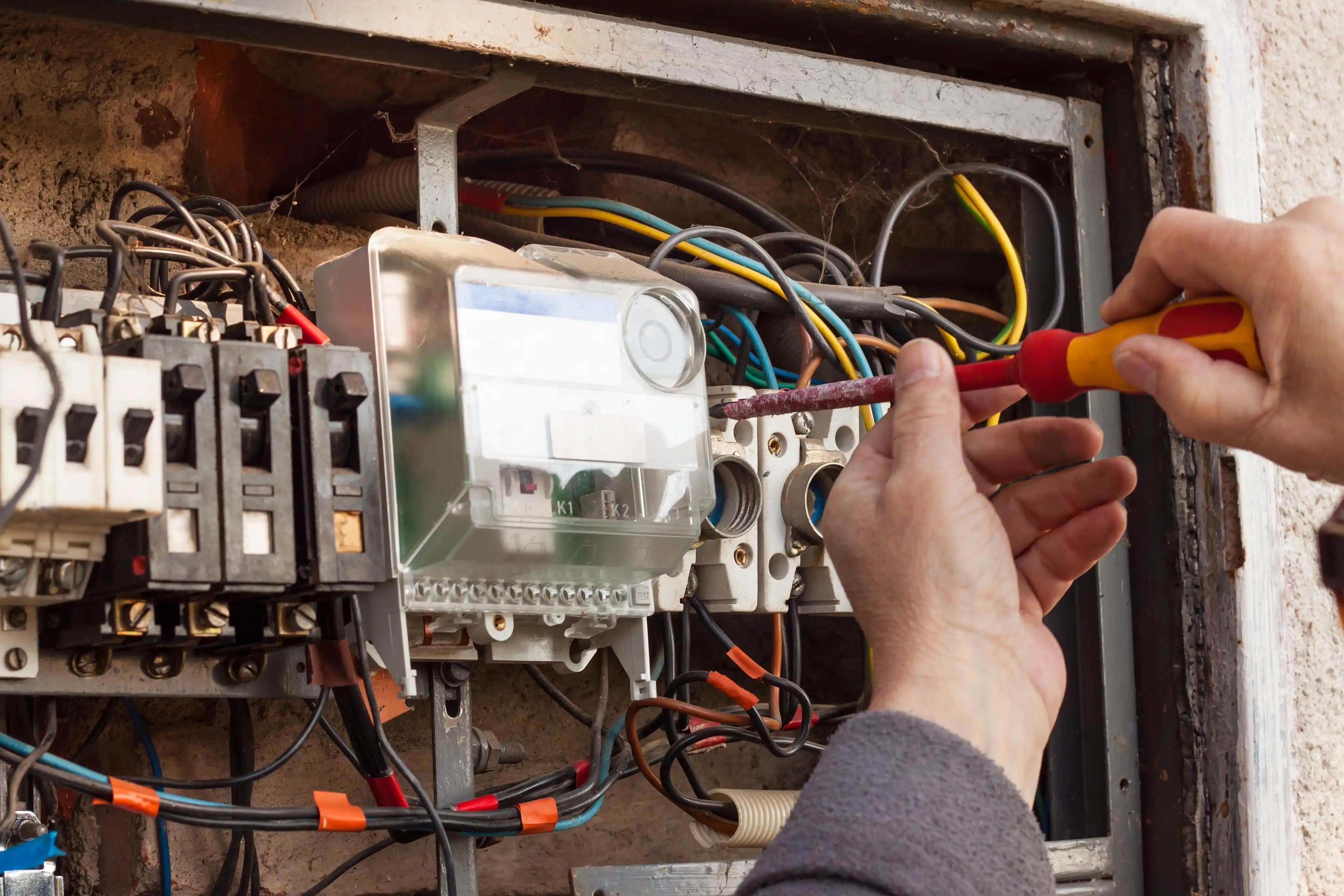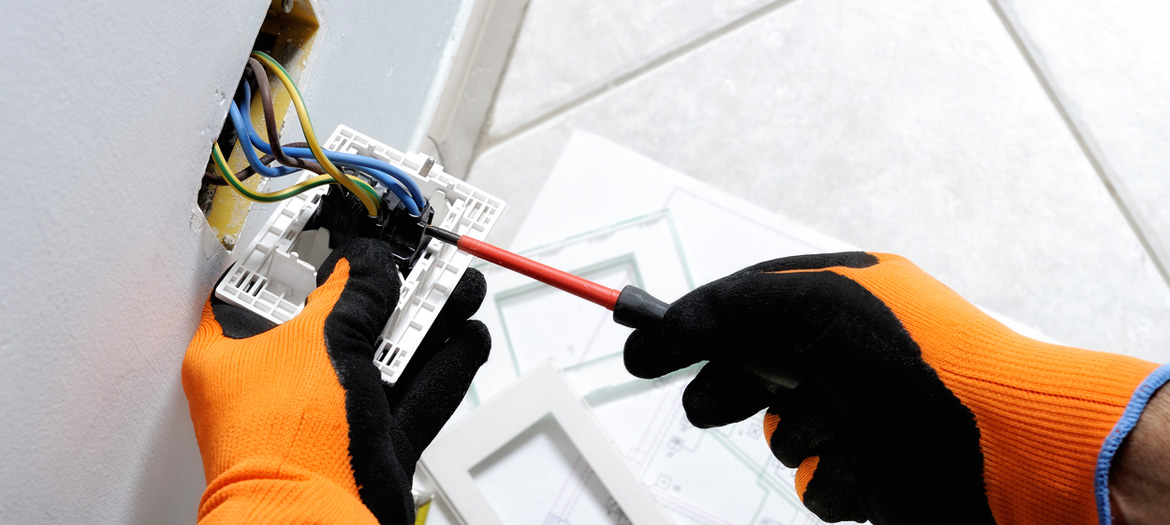Typical Electrical Problems Every Home Owner Must Learn about
Property owners often come across various electric troubles that can impact safety and performance. Problems like flickering lights and stumbled circuit breakers are much more common than numerous recognize. These circumstances can suggest deeper electric problems that warrant interest. Understanding the signs and dangers connected with out-of-date wiring and dead electrical outlets is essential. What procedures can be taken to stop these issues? Exploring these typical electric concerns could disclose vital insights for preserving a risk-free home environment.

Flickering Lights: Reasons and Solutions
Why do some house owners experience flickering lights? Flickering lights can be a common aggravation, typically showing underlying electrical issues. One key cause is faulty or loosened links within lights or electrical wiring, which can cause recurring power supply. Additionally, using high-wattage home appliances on the exact same circuit might create voltage fluctuations, resulting in flickering or lowering. Another possible concern is an overloaded circuit, where as well lots of devices attract power concurrently, stressing the electrical system. Furthermore, abject or out-of-date circuitry can add to irregular electrical circulation. In many cases, flickering lights may indicate a problem with the home's electric panel or service line. House owners must deal with flickering lights without delay to avoid prospective risks. Solutions may include tightening connections, rearranging appliance lots, or speaking with an accredited electrical contractor for a complete analysis. Recognizing the origin cause can help guarantee a safe and stable electrical system in the home.
Tripped Circuit Breakers: What You Required to Know
Have house owners ever questioned what creates their circuit breakers to trip unexpectedly? This common concern often arises from an overload of electrical circuits, where too several tools attract power at the same time. In such instances, the breaker functions as a safety device, interrupting the circulation of power to stop overheating and prospective risks. An additional frequent reason is a short circuit, which takes place when an online wire contacts a neutral cable, producing a rise of electrical power that journeys the breaker. Ground faults can additionally cause tripped breakers; these occur when a real-time wire touches the ground or a grounded surface, positioning major safety threats. House owners need to consistently evaluate their use of high-wattage appliances to prevent overloading circuits. In addition, understanding the function of circuit breakers can aid them respond properly throughout a trip, guaranteeing their home remains well-maintained and risk-free.
Obsolete Circuitry: Indications and Threats
Obsolete electrical wiring can pose considerable threats to homeowners, commonly going undetected till troubles emerge. Homes developed prior to the 1980s might still have aluminum circuitry or knob-and-tube systems, which are no more thought about secure. Indicators of obsolete wiring include flickering lights, frequently stumbled breaker, or melting scents near electrical outlets. These signs might suggest that the electrical system is overburdened or deteriorating.Additionally, house owners might notice burn marks around buttons or electrical outlets, which can suggest overheating. The threat of electrical fires substantially increases with obsolete circuitry, as these systems were not made to handle modern electrical lots. Homeowners are encouraged to have their wiring evaluated regularly, especially when refurbishing or adding brand-new devices. By identifying these indications early, they can avoid unsafe scenarios and keep a much safer living environment. Upgrading to current electric requirements is a proactive action in maintaining home safety and security and efficiency.
Frequently Blown Fuses: Repairing Tips
Regular blown integrates can show underlying electrical concerns that may originate from out-of-date wiring or overloaded circuits. Homeowners experiencing this issue should initially identify the devices connected to the influenced circuit. It is advisable to prevent using several high-wattage devices simultaneously, as this can bring about circuit overload. If the problem continues, evaluating the circuit box for indicators of wear or damage is essential; a malfunctioning fuse box might call for replacement.Additionally, inspecting for loosened links within the circuit can help stop future incidents. House owners should likewise validate that the integrates being utilized are of the correct amperage, as utilizing a wrong fuse can aggravate the problem. If these fixing pointers do not settle the issue, speaking with a licensed electrical expert is suggested to examine the electrical system better. Dealing with these worries immediately can help mitigate risks and ensure the security of the home's electric framework.
Dead Electrical Outlets: Common Causes and Fixes
When a homeowner experiences a dead outlet, it can commonly provide irritation and complication. A number of usual reasons may result in this problem. One regular perpetrator is a stumbled circuit breaker, which can be easily reset. House owners should inspect their electric panel to look at these guys check if any breakers remain in the off setting. One more possibility is a faulty electrical outlet itself, which may call for replacement. In addition, loosened wiring links within the outlet can interrupt power circulation, making assessment essential.Sometimes, the problem may stem from an overloaded circuit, particularly when several gadgets are attached. In such situations, rearranging the electrical load can settle the problem. House owners ought to additionally think about the age of their wiring; older systems may require updates to satisfy modern electrical needs. If these steps do not fix the situation, speaking with an accredited electrician is suggested to ensure safety and security and proper diagnosis.
Electrical Shocks: When to Be Worried
Exactly how can property owners establish whether an electrical shock warrants problem? Property owners need to first examine the extent and context of the shock. A mild fixed shock, frequently really felt when touching metal things, is common and typically harmless. Nevertheless, if the shock takes place while interacting with a plugged-in home appliance or electrical outlet, it may suggest a more serious issue.The place and regularity of the shocks are essential. Repetitive shocks from the exact same resource, especially in wet areas like kitchen areas or bathrooms, might indicate malfunctioning wiring or inadequate grounding. Property owners ought to likewise consider the experience of the shock; a jolt that creates discomfort or contraction is a lot more disconcerting than a simple tingle.If there's any type of unpredictability, it is advisable to seek advice from a qualified electrical contractor. Ignoring possible electric hazards can result in significant safety risks, consisting of fire or extreme injury.
Overloaded Circuits: Avoidance and Safety And Security Procedures
Overloaded circuits present significant risks in domestic settings, commonly leading to electric fires or devices damage (Level 2 Electrician Sydney). Homeowners have to recognize the signs of an overloaded circuit, such as often stumbled breakers or lowering lights. Executing preventative safety and security methods can help minimize these threats and assure a much safer living setting
Recognizing Overloaded Circuits
What indicators suggest that a circuit may be overloaded? Property owners ought to be alert for several crucial signs. Regularly tripped breaker or blown fuses suggest too much load on the circuit. Dimming or flickering lights, specifically when other devices are in usage, can signify an insufficient power supply. In addition, Read Full Article outlets or switches that really feel warm to the touch may suggest overheating, a possible fire risk. Unusual humming noises from outlets likewise call for focus, as they can symbolize electrical issues. If devices run inefficiently or fall short to begin, it may be a sign of an overloaded circuit. Acknowledging these indicators early can aid prevent severe electrical problems and promote a much safer home setting.
Preventive Safety And Security Practices
To keep a efficient and safe electrical system, property owners need to carry out preventative safety methods that deal with potential circuit overloads. One efficient measure is to stay clear of attaching as well many tools to a single electrical outlet, as this can surpass the circuit's ability. Making use of power strips with integrated breaker can aid disperse power securely. Property owners ought to likewise consistently inspect cables and devices for damage and replace any kind of damaged site web equipment quickly. It is essential to guarantee that circuit breakers are operating correctly and to be knowledgeable about the complete wattage being used in each circuit. In addition, consulting a certified electrician for periodic assessments can determine prospective issues prior to they escalate, ensuring a safer living atmosphere and extending the life-span of electrical systems.
Regularly Asked Inquiries
Exactly how Frequently Should I Have My Electric System Inspected?
Routine evaluations of electrical systems are advised every three to 5 years. Home owners should take into consideration much more frequent checks if they experience concerns, take on renovations, or live in older buildings to assure security and compliance.
Can I Deal With Electric Issues Myself or Work With a Professional?

What Are the Indicators of an Electrical Fire Danger?
Signs of an electrical fire risk include frequently tripped circuit breakers, flickering lights, melting smells, discolored outlets, or cozy, humming wires. Home owners ought to continue to be cautious and look for professional aid if any one of these signs exist.
How Do I Know if My Home Demands an Electrical Upgrade?
To figure out if a home requires an electrical upgrade, indications consist of constant circuit breaker journeys, out-of-date wiring, insufficient electrical outlets, flickering lights, and the presence of older electrical panels, indicating potential security risks and ineffectiveness.
Exist Certain Safety And Security Tips for Do It Yourself Electrical Job?
When thinking about DIY electric job, one ought to always shut off power, make use of shielded tools, confirm circuit functionality, comply with neighborhood codes, and seek advice from specialists for complex tasks to ensure safety and avoid accidents. One more potential concern is an overloaded circuit, where too lots of gadgets attract power at the same time, straining the electric system. The risk of electric fires significantly raises with outdated circuitry, as these systems were not developed to manage modern electric tons. Regular blown integrates can suggest underlying electrical problems that might stem from obsolete electrical wiring or overloaded circuits. To maintain a risk-free and reliable electrical system, homeowners should apply precautionary safety methods that address possible circuit overloads. Accredited Service Provider Level 2 Electrician. Signs of an electric fire risk include regularly stumbled circuit breakers, flickering lights, melting smells, blemished outlets, or cozy, buzzing cords